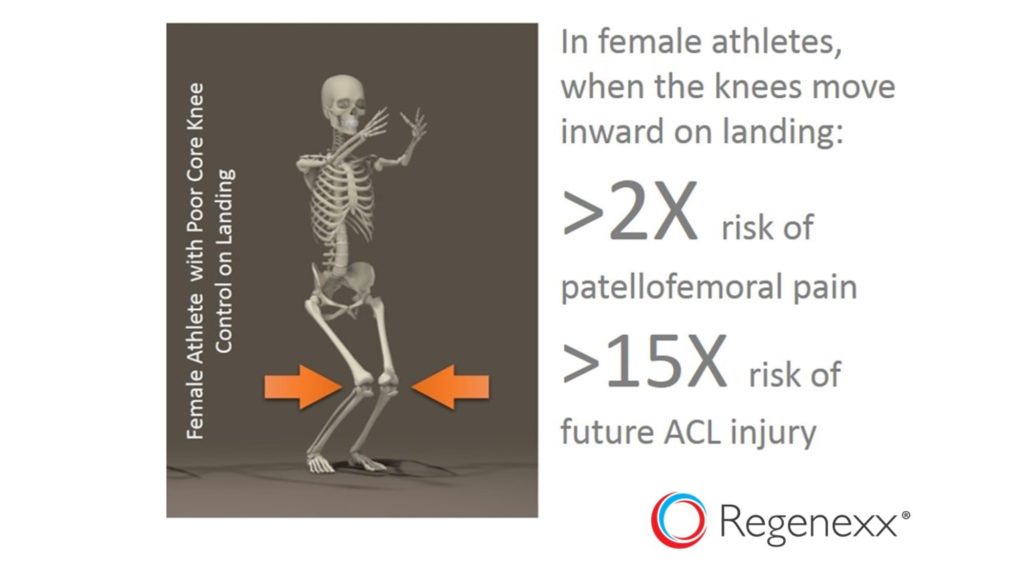ACL Injury Causes: Girls Who Lack Knee Control are 15X More Likely to Injure Their Knee ACL Ligaments
What are common ACL injury causes? Well, if you’re a female athlete, two big studies published this past month agree on the cause – lack of knee control in landing. More specifically, too much inward movement of the knee while landing.
I blogged on the first knee ACL injury study a few weeks ago. It compared dancers, men, and female athletes, The dancers and men landed with good control of their knee in line with their hip, However, the female athletes tended to lose control of the knee and it came inward. This new study looked at women athletes going forward after measuring their ability to land with knee control. The athletes with poor knee control on landing were more than 15 times as likely to go onto injure their ACL. Interestingly, they were also more than twice as likely as those with good knee control to develop patellofemoral knee syndrome (knee cap problems).
Take the Test to Determine Knee ACL Injury Risk
This test just takes a minute or less. Have your athlete stand against a wall without touching it. Have her jump straight up and down, landing in the same spot. Watch her knees closely as she lands. Do they stay apart and in-line with the hip? Do they come inwards or touch? If the latter is the case, there’s likely a higher risk for ACL injury and patellofemoral pain syndrome.
Here are tests on two of my kids, my soccer athlete daughter and my athletic son. Watch the knees of my son when he lands, note how they stay apart and generally in-line with his hips:
Now take a look at how my daughter’s knees come together uncontrollably as she lands:
The test result? My daughter is at greater risk for an ACL injury as she can’t control her knees as she lands and they trend inwards.
Can You Fix ACL Injury Risk?
As I noted above, female dancers don’t do this with their knees as they land. So while women have more forces to overcome because of their wider hips, they also can remediate the problem. Focus strengthening on core hip abductor exercises. Here’s an example:
Do these for three sets for as many reps as it takes to lose your form. After a few weeks, retest to see if you’re getting better and have good knee control, if not, continue strengthening or see an athletic trainer or physical therapist.
The upshot? You can easily test if you or the female athlete in your life have a knee control issue on landing. If you do, then fix your core knee control issues, as I really don’t want to see any more female athletes with shredded ACLs! While we can generally help them with precise stem cell injections, why not just fix the problem before it blows up into something bigger.

NOTE: This blog post provides general information to help the reader better understand regenerative medicine, musculoskeletal health, and related subjects. All content provided in this blog, website, or any linked materials, including text, graphics, images, patient profiles, outcomes, and information, are not intended and should not be considered or used as a substitute for medical advice, diagnosis, or treatment. Please always consult with a professional and certified healthcare provider to discuss if a treatment is right for you.


